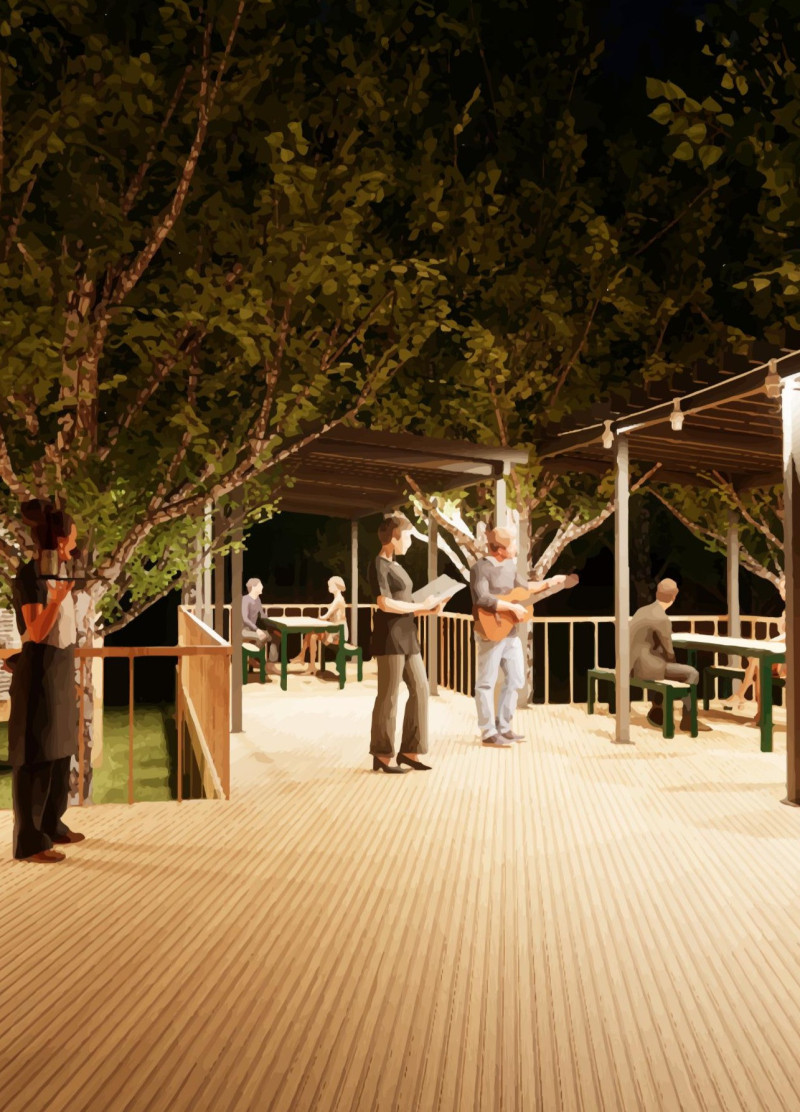5 key facts about this project
The Sansusi Music Festival Food Court is a well-planned structure situated in a lively outdoor space, designed to enhance the festival experience for visitors and vendors alike. It consists of three catering huts raised on a 1m high deck, which allows for a practical use of space while ensuring minimal impact on the natural surroundings. The design focuses on creating an inviting atmosphere that encourages social interaction among festival-goers while offering convenient access to a variety of food options.
Layout and Flow
The arrangement of the food court encourages easy movement through the area, with pathways that guide attendees naturally. The three huts create a semi-enclosed space, forming a cozy area where people can gather and interact. This layout maximizes visibility for each vendor, ensuring that all offerings are easily found. The design considers how people move and interact, leading to a user-friendly environment that enhances the overall festival experience.
Materiality and Structure
The design incorporates polycarbonate sheets to provide transparency and lightness to the huts. This choice of material is practical, as it requires little maintenance, allowing the structure to remain functional throughout the festival and beyond. The use of thick timber beams and columns gives stability to the huts while contributing to their warm aesthetic. Each hut features wooden stud walls that offer the flexibility for vendors to personalize their spaces with shelving, signage, or decorations.
Security Features
To address the need for safety, the huts are built with folding wooden doors that include locking mechanisms. This feature ensures that vendors can securely store their supplies when the food court is not in use. By prioritizing these security details, the design helps create a practical solution for the busy environment of a festival, providing both convenience and safety.
The design focuses on preserving the natural surroundings while establishing a modern catering area. Each hut contributes to the overall experience by inviting interaction and creating a vibrant space for social engagement, with the design elements working together to enhance the festive atmosphere.






















































